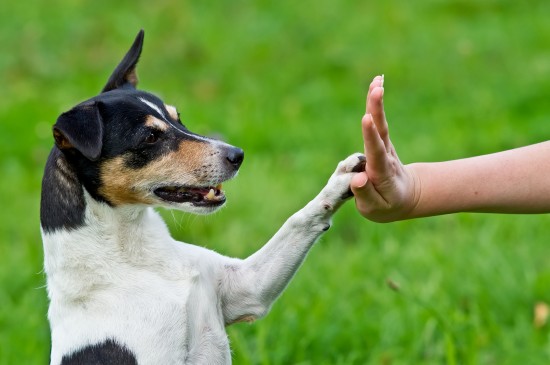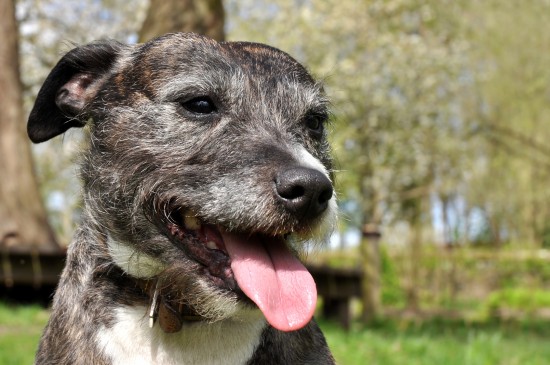

As pack animals, dogs are used to living their lives within a hierarchy of alpha, beta, and lower pack members, and this is the same within the family home. This also means that depending on the handling your dog has received and their general personality traits, some dogs will be much bolder and more outgoing than others, while some dogs are quite shy.
When training and handling your dog, it is important to establish yourself as your dog’s alpha, but not to turn your dog into a submissive pet that is shy or afraid of everything, or that never gets to explore and investigate things for themselves. If your dog is particularly shy or nervous, the chances are that they are rather highly strung, and need a reasonable amount of attention and reassurance to keep them happy in every situation.
So, is there any way to boost the confidence levels of your dog, and make them a little more bold and less shy? Read on to find out!
First and foremost, dogs need to feel secure with you and within their living situations, and to have a set routine that they can come to rely on. This means spending plenty of time with your dog, walking them adequately and at similar times each day, and feeding your dog to a set routine so that they never have to worry about where their next meal is coming from.
This routine and security of living form the basis of your dog’s understanding of the world, and give them confidence and peace of mind within themselves. You should also ensure that your handling of your dog is clear, kind but firm and consistent, and that your living environment is stable for your dog.
Positive reinforcement is the principle of rewarding and praising your dog for good behaviour rather than punishing them for poor behaviour as a training technique. Dogs that are trained or used to negative reinforcement tend not to thrive so much, and are exponentially more likely to become shy or uncertain of their treatment.
Keep your tone of voice level, reassuring and soothing to your dog, and stay calm, whatever the situation. Don’t be shy to praise your dog when they are being good, do something right, or are simply sitting quietly.
Show your dog plenty of affection, patting him and scratching him where he likes to be scratched. Your tone of voice should be reassuring to your dog, and they should learn that when they respond to your voice and vocal commands, you will reward them. Try to encourage your dog using your voice to do things that may be outside of his comfort zone, rather than pushing him into doing things he does not want to do. If your dog hides out due to shyness, do not remove them from their safe place or try to push them into interaction, but encourage them, and try to tempt them to come out on their own.
Training is essential to pretty much every aspect of dog ownership, and forms the building blocks of your interaction with your dog and how they behave. It also provides important guidelines for your dog, as well as boundaries, which help your dog to feel secure within his life.
Train your dog to the basics, such as sit, stay, down, come here, and no, and then progress to more commands if your dog can retain them. Always reward your dog with either a treat or praise for compliance, and build up your dog’s confidence by encouraging them to go one step further or show you their stuff, rewarding them strongly when they do.
Training has a great many confidence-boosting benefits for your dog, particularly if you make it fun; if your dog views training as a game and something positive, they are likely to come out of their shells more and become more outgoing.
While it is important to retain the pack hierarchy with you at the top, it is also important that your dog understands that you are an ally and not a threat to him. Your physical size and stature above your dog can prove unnerving to shy dogs, and you can change this by getting down to your dog’s level and metaphorically showing them your weaker side. This is of course not recommended for a dominant, bold dog who already feels secure with you, but for a shy dog, it can give them a confidence boost. Sit on the floor with your dog, and don’t be afraid to let your dog come up to you at your own eye level, either by getting down to their level or encouraging your dog to come and sit on the furniture with you.
Speak reassuringly to your dog throughout, and praise them warmly for stepping outside of their comfort zone.
 Top Tips On Keeping Your Cat Safe This Christmas
Top Tips On Keeping Your Cat Safe This Christmas
 Canine Communication - Three Ways In Which You Might Be Doing Your Dog A Disservice
Canine Communication - Three Ways In Which You Might Be Doing Your Dog A Disservice
 Mast Cell Tumours In Dogs
Mast Cell Tumours In Dogs
 Choosing The Longhaired Dog Breed That Is Right For You
Choosing The Longhaired Dog Breed That Is Right For You
 The Behaviour Of Mature Dogs Aged 8-10 Years Old
The Behaviour Of Mature Dogs Aged 8-10 Years Old
 Saint Bernard Dog Hereditary Health And Health Testing
Saint Bernard Dog Hereditary Health And Health Testing
 Are Wild Foxes A Danger To Your Pets?
Are Wild Foxes A
Are Wild Foxes A Danger To Your Pets?
Are Wild Foxes A
 Most Easy Steps to Train a Dog
Most Easy Steps to Train a Dog
Most of us thin
Most Easy Steps to Train a Dog
Most Easy Steps to Train a Dog
Most of us thin
 10 Of The Friendliest Cat Breeds On The Planet
10 Of The Friendl
10 Of The Friendliest Cat Breeds On The Planet
10 Of The Friendl
 Different Methods Of Rabbit Communication
Different Methods
Different Methods Of Rabbit Communication
Different Methods
 Blue-green Algae And Its Risks For Dogs
Blue-green Algae
Blue-green Algae And Its Risks For Dogs
Blue-green Algae
Copyright © 2005-2016 Pet Information All Rights Reserved
Contact us: www162date@outlook.com